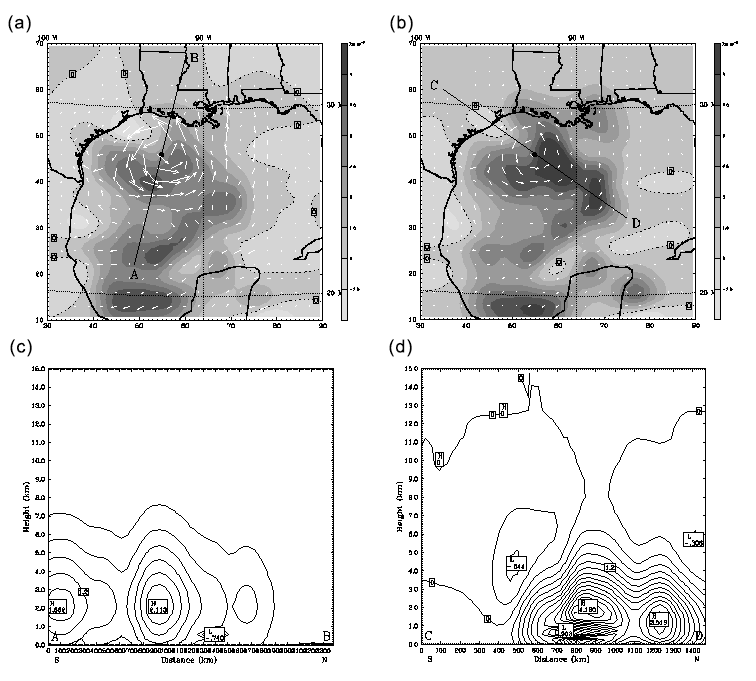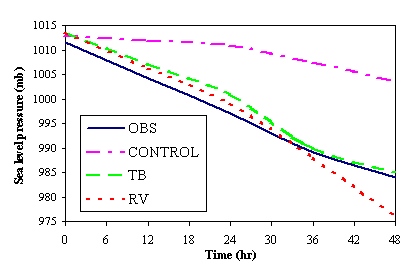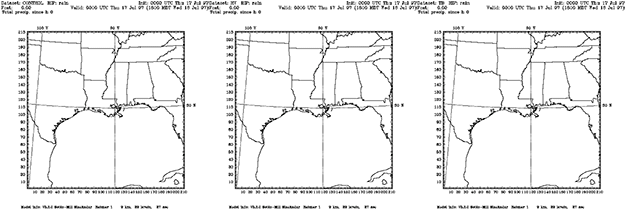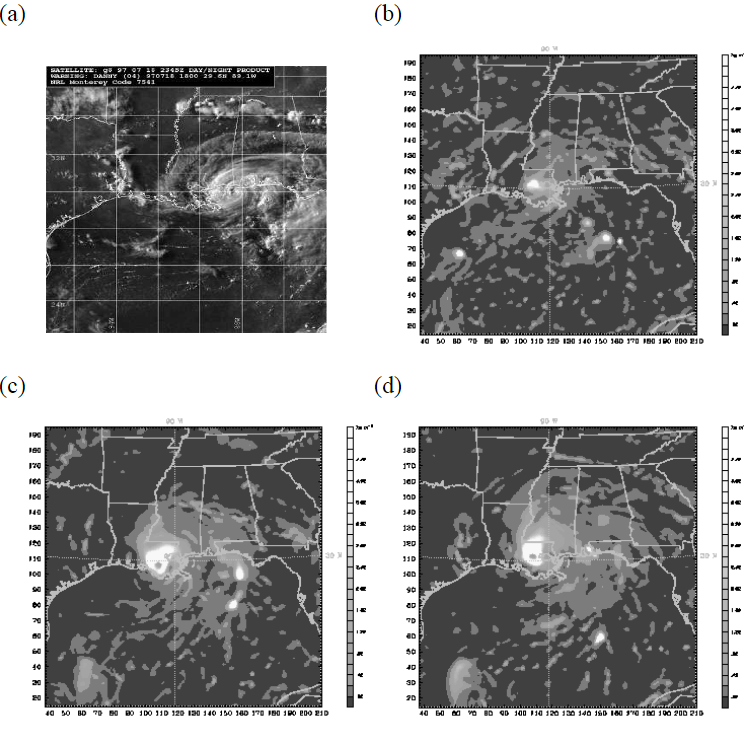The impact of the Special Sensor Microwave/Imager (SSM/I) data on hurricane Danny simulations is assessed. The assimilation of SSM/I data is found to (1) increase the atmospheric moisture content over the Gulf of Mexico; (2) strengthen the low-level cyclonic circulation; (3) shorten the model spin-up time, and (4) significantly improve the simulation of the storm.s intensity. Two different approaches of assimilating SSM/I data, namely assimilating retrieved products and assimilating raw measurements, are further compared. The data assimilation analyses from these two approaches give different moisture distributions in both the horizontal and vertical directions in the storm’s vicinity, which may potentially affect the simulated storm’s development; however, the simulated storm intensities are considered comparable for the Danny case. From sensitivity tests performed in this study, it is also found that the choice of the observational error variances could be potentially important to the model simulations.




ASSESSMENT OF RETRIEVED GPS PRODUCTS USING AN ABSERVING SYSTEM SIMULATION EXPERIMENT
Using a high-resolution mesoscale model with an Observing System Simulation Experiment (OSSE) approach, it is found that retrieved refractivity might be underestimated and its uncertainty in the lower troposphere can reach about 10 units under the assumption of locally spherical symmetry. From a sensitivity study, we also found that refractivity is very sensitive to the low-level moisture field and to a lesser extent, the low-level temperature field. Both findings provide possible evidence that assimilating retrieved refractivity might introduce errors in pressure, temperature, and moisture in the 3DVAR analysis, and these errors are comparable to errors imbedded in the mesoscale model initial condition, which might lead to significant uncertainty in a high-resolution mesoscale model forecast.
